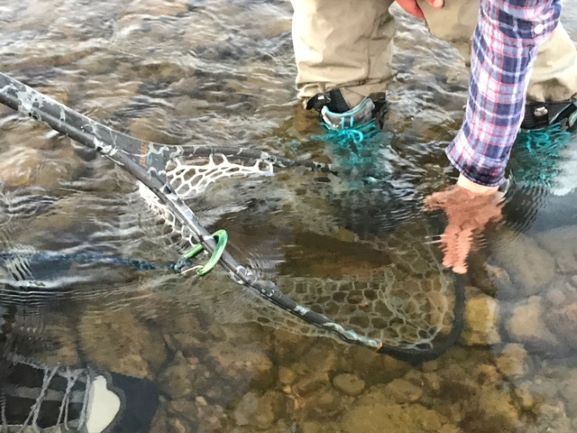Posted by Nicole Tomlin on Sep 18th 2018
Fishing local waters doesn't have the glam, solicit the bragging rights, or create the mystic per-say, then... anywhere else.... Yet, they are many of our "true blues". They are the rivers that we grew-up on, the rivers that have given us fish, the rivers that have taken them away, the rivers that have taught us about the hatches, and frustrated us with low lying limbs and fly stealing obstacles, the rivers that have given us our first fish, and for some our last.
The Provo River, perhaps the most generous of all our local waters deserves a well earned nod. For 70 miles this river winds from the the high country in the Uintas down to its terminus at Utah Lake. Recent statistics have suggested that there are upwards of 3,000 fish per river mile on this rivier. A maddening thought when coming-up empty handed. With hatches ranging from October Caddis, to the tiniest of midges in the winter months, the Provo River can teach us many things about entomology and everything in between. Eagles, moose, coyotes, badgers share the river with us on a daily basis. We are lucky.
The importance of this river pre-dates written history, used for centuries by local tribes. Timpanoquint, is the name given to this river, by the Ute tribe. It’s meaning "water running over rocks” is both beautiful and apt, especially on the free flowing upper section. After the exploration of the west was underway a french-trapper, Etienne Provost, (pronounced Provo) who’s trade routes criss-crossed the West during the 1880’s, became the namesake for both the river and the city of Provo.
The modern age has changed the face of the Provo as needs for jobs and resources became precident. Roosevelt’s “National Recovery Act” of 1933 led to the Deer Creek Dam, which was completed in 1941. Jordanelle Dam wasn’t completed until 1993. These two reservoirs harness water from the high mountains to provide irrigation and h20 to the Wasatch Front.
In 1999, the Provo River Restoration began, with the goals of resorting the once meandering river. Side channels, wet lands, and s-curves were constructed, to alter the canal like trajectory the river had taken on since the Jordenelle Dam was errected. Historical maps and records helped with the excavation, the hope remained to restore the rich ecological diversity the river once exemplified. Native riperian plants have been planted, and monitored for health encouraging habitat development for birds, rodents, and insects. The river access we enjoy on the Middle Provo, also was created during this time, as the 800-2500ft wide corridor along the Middle Prove remains open to anglers and other wildlife.
From the run-off that fills the stream beds, to the folks who work to protect it, we again, are lucky.

These rivers are special regardless of their common-place in fly-fishing conversation. We take things for granted, that's what we do. But, having personally sent 100's of folks to the banks of the Provo, the Weber and the Uintas, I wanted to say thank you to the rivers that give all of us a chance to learn, and fail, and learn some more.

